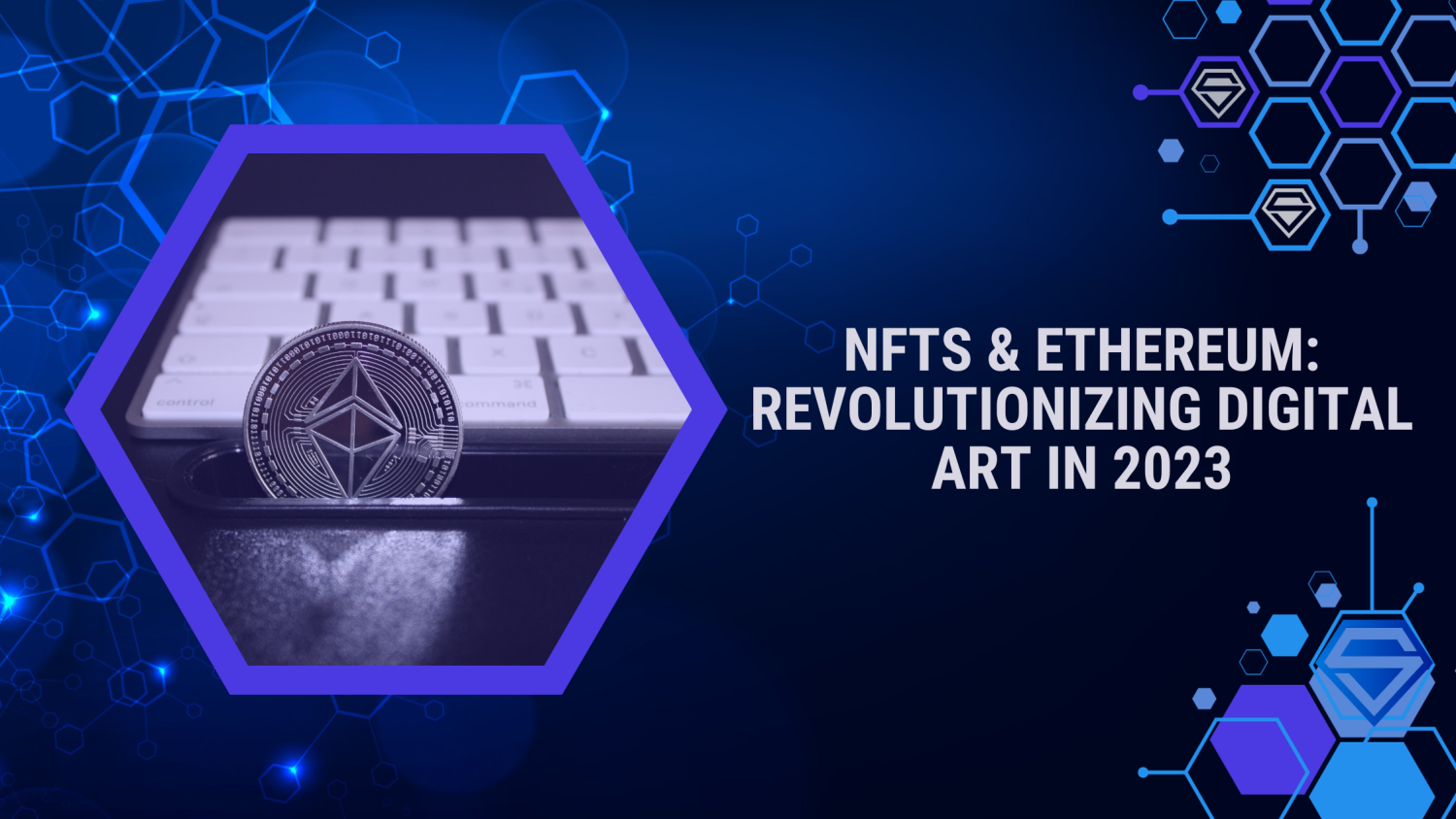
24. October, 2023
How are NFTs and Ethereum changing the Face of Digital Art?
Imagine you’re an artist laboring for hours to create a masterpiece, and yet the traditional art world struggles to recognize your efforts. Or perhaps you’re an art enthusiast, restricted by geographical boundaries, unable to explore galleries and connect with artists.
These are the pain points that NFTs and Ethereum are addressing, and in this blog, we will explore how they are transforming the landscape of digital art.
NFTs: The Key to Art’s Digital Identity
In the dynamic realm where art and technology converge, Non-Fungible Tokens (NFTs) stand as the transformative force that grants artists unprecedented control over their digital creations. These digital certificates of ownership and authenticity, powered by blockchain technology, particularly Ethereum, are altering the landscape of digital art.
Let’s delve deeper into how NFTs are reshaping this domain:
Provenance and Authenticity
The concept of tracing a digital artwork’s origin and authenticity has long been a challenge. NFTs resolve this pain point by offering an unassailable solution. Through NFTs and smart contracts on the Ethereum blockchain, artists can now establish and maintain an immutable ledger that meticulously records the ownership and history of their creations.
This transparent ledger acts as an indomitable guardian of an artwork’s provenance, assuring both artists and collectors of its authenticity and uniqueness.
Global Accessibility
The traditional art world has been marred by geographical limitations, restricting artists and collectors alike. NFTs obliterate these constraints, enabling artists to connect with a global audience.
Moreover, collectors can transcend borders, diversifying their portfolios by investing in art from every corner of the world. This newfound global accessibility is breaking down the barriers that have confined art for centuries.
Revenue Streams
NFTs introduce an innovative revenue model for artists, one that extends well beyond the initial sale. Through the magic of smart contracts, artists can earn royalties each time their artwork changes hands in the secondary market. This dynamic ecosystem ensures that an artist’s work continues to support them long after its creation, offering a sustainable and fair compensation model.
Democratizing Art
One of the most remarkable aspects of NFTs is their ability to democratize the art world. Emerging artists, often overlooked by the traditional art establishment, now have the opportunity to gain recognition and compensation for their work.
Art is no longer a privilege reserved for a select few; it’s open to anyone with a passion for creativity. NFTs have paved the way for a more inclusive and diverse art landscape.
Ethereum: The Backbone of the NFT Revolution
Ethereum, the blockchain platform underpinning the NFT revolution, is the silent powerhouse reshaping the face of digital art. Here’s a closer look at how Ethereum plays a pivotal role in this transformative journey:
Smart Contracts
At the core of Ethereum’s influence on the NFT revolution are smart contracts. These ingenious digital agreements automate and enforce the terms of NFT transactions, making them a game-changer for artists and collectors. Smart contracts eliminate the need for intermediaries, such as galleries or auction houses, streamlining the exchange of digital art.
This not only reduces the associated costs but also ensures a secure, trustless, and seamless process. With Ethereum’s smart contracts, artists can confidently and directly connect with their audience and buyers, ultimately democratizing the art world.
Interoperability
Ethereum’s open-source and decentralized nature has given rise to an NFT ecosystem that thrives on interoperability. This means that various platforms and marketplaces can readily adopt Ethereum’s standard for NFTs.
As a result, artists and collectors benefit from a seamless, interconnected network where their digital art can be easily traded, displayed, and appreciated. Ethereum has set the stage for a unified digital art marketplace, transcending boundaries and allowing artworks to flow freely across different platforms and marketplaces.
Environmental Concerns
While Ethereum has spearheaded the NFT revolution, it hasn’t turned a blind eye to environmental concerns. Acknowledging the carbon footprint associated with its proof-of-work consensus mechanism, Ethereum is actively taking steps to reduce its environmental impact. The transition towards Ethereum 2.0, with its shift to a proof-of-stake consensus mechanism, marks a significant milestone in this effort.
By replacing energy-intensive mining with a more sustainable staking system, Ethereum promises to decrease its energy consumption significantly. This environmentally conscious approach aligns with the broader goals of sustainable innovation in the digital art space.
The Dynamic Evolution of Digital Art
NFTs and Ethereum have ushered in a new era for artists. The traditional art world often struggles to recognize and compensate digital creators adequately. NFTs have altered this paradigm, granting artists unprecedented control over their work.
Additionally, thanks to NFTs, artists can effortlessly connect with a global audience, transcending borders and cultures. Simultaneously, collectors find themselves empowered to diversify their portfolios by investing in digital art from every corner of the world. The global accessibility offered by NFTs is not merely a shift; it’s a revolution in itself, enabling a richer and more diverse art ecosystem.
Lastly, one of the most inspiring outcomes of the NFT revolution is the democratization of the art world. Emerging artists, who were once marginalized by the traditional art establishment, now have a genuine chance to gain recognition and compensation for their creative efforts. This transformative shift means that art is no longer the sole domain of a privileged few but is accessible to anyone with a passion for creativity. It opens doors for fresh talents, diverse voices, and innovative perspectives.
Conclusion
In conclusion, NFTs and Ethereum are more than just buzzwords; they are the building blocks of a new era for digital art. Whether you’re an artist looking for recognition and fair compensation or an art lover seeking a diverse, global, and immersive experience, NFTs and Ethereum are undoubtedly changing the game, offering opportunities and solutions that were once thought impossible.
Stay tuned for more insights on how the world of art and technology continues to collide, shaping a future where creativity knows no bounds.


